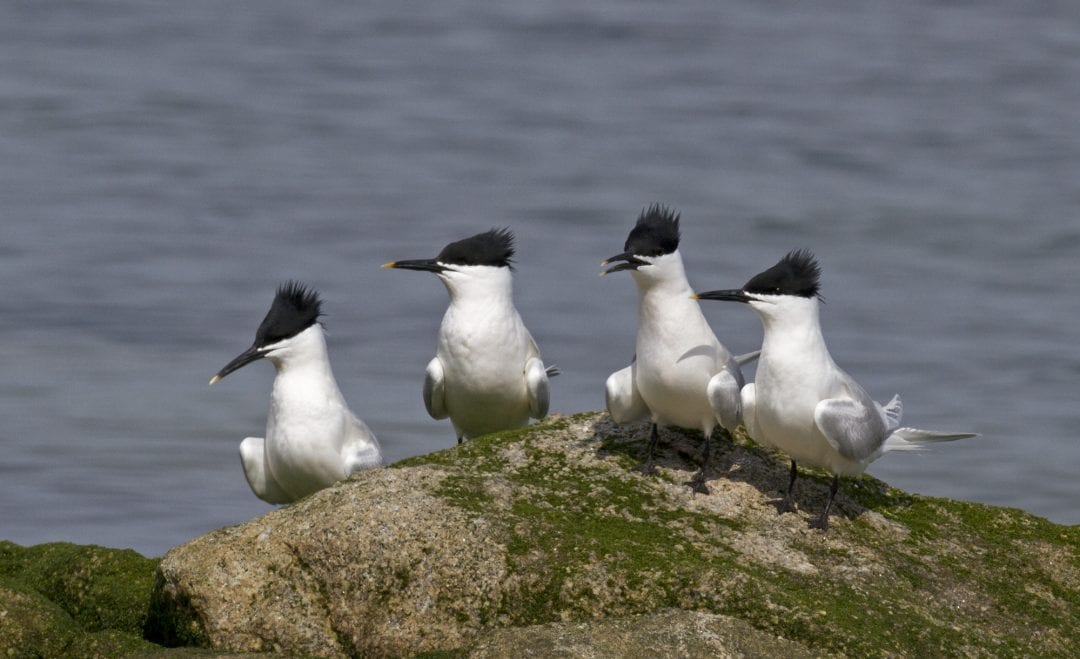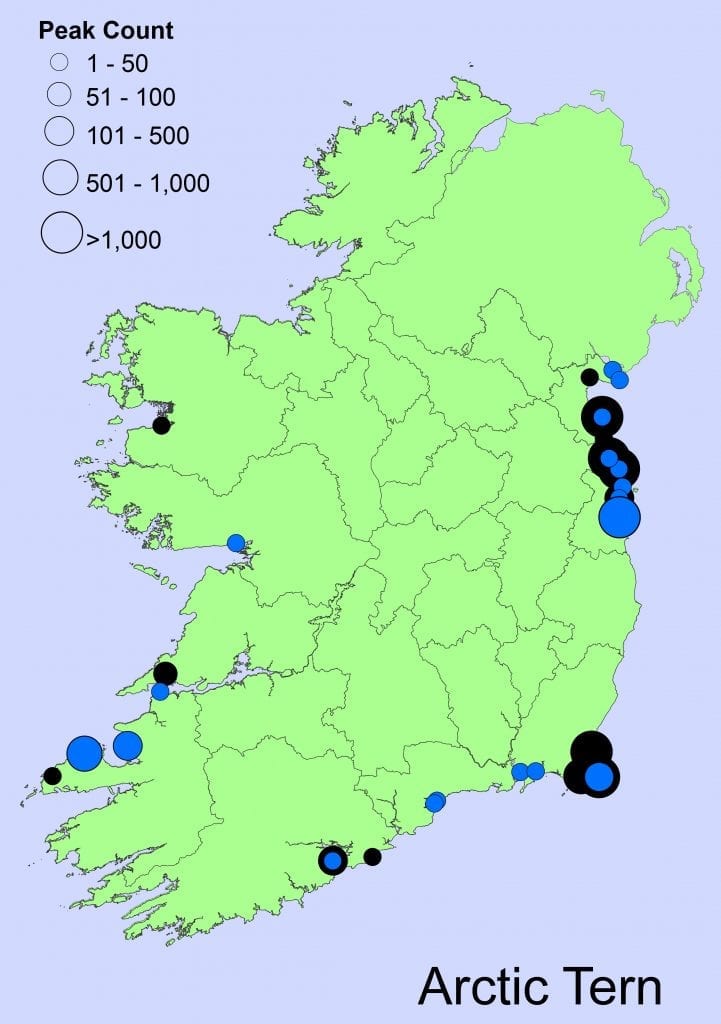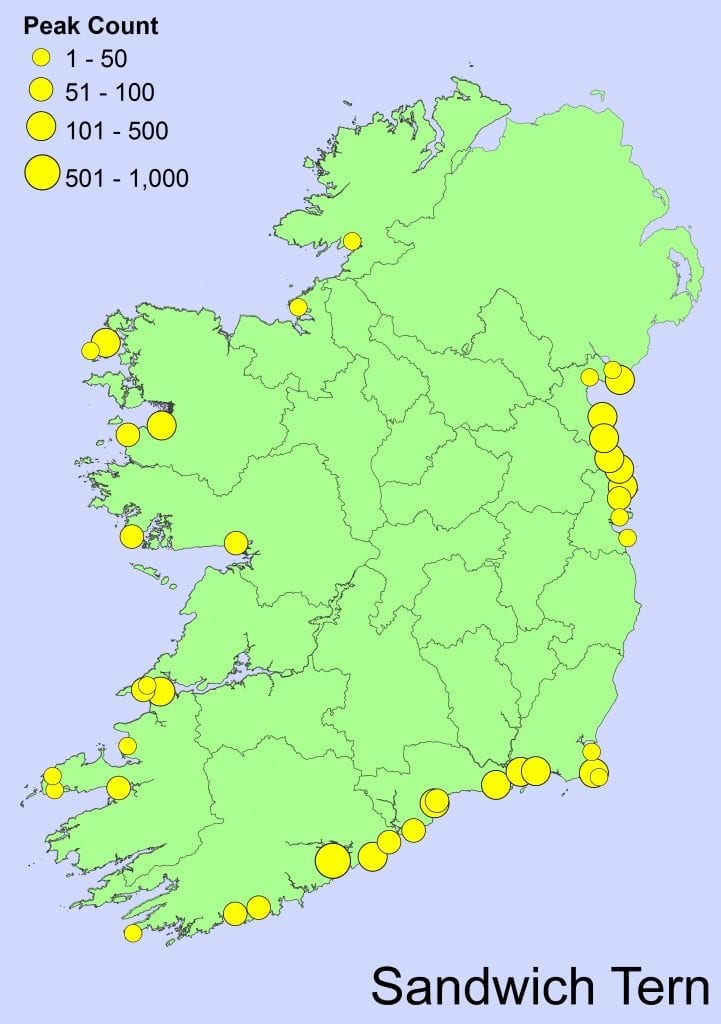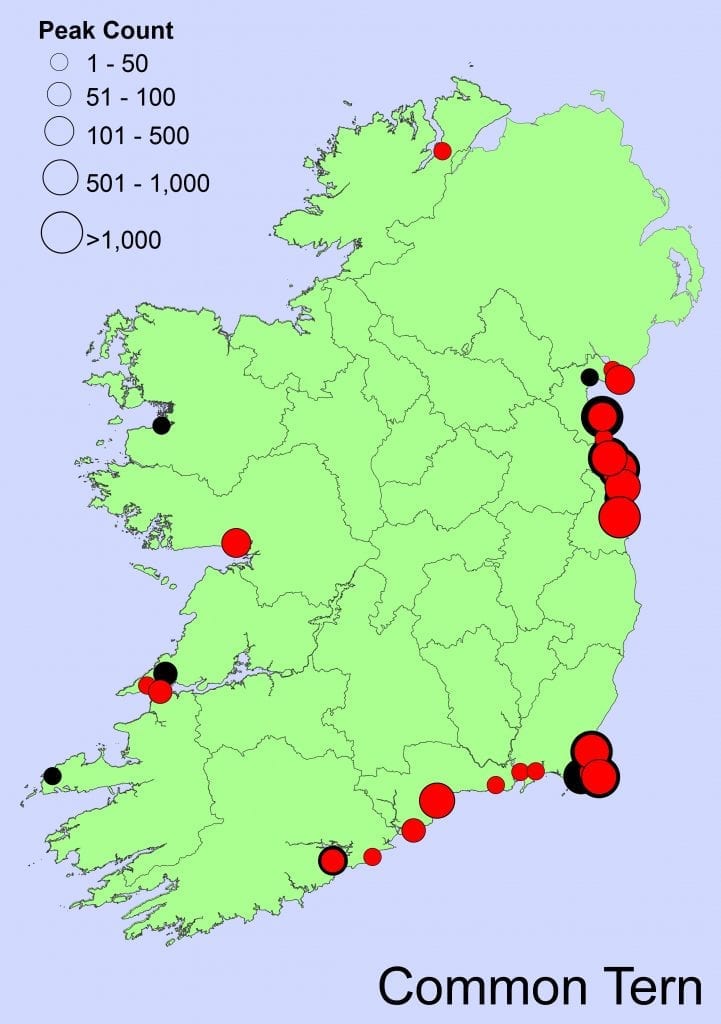The seabird nesting season is nearly over for most species. With the exception of some species like Gannets and Manx Shearwaters that have some of the longest chick-rearing periods of all of our birds here in Ireland, most seabirds have finished nesting and their chicks have fledged. Gull chicks have taken to the air, Puffin chicks have fled from their burrows, and Razorbill chicks have taken a big leap of faith off their nesting cliff ledge. Our five species of Terns – Sandwich Terns, Common Terns, Arctic Terns, Roseate Terns and Little Terns are all preparing to head back to Africa and beyond, but first they’ll spend a few weeks feeding and resting in preparation – you can’t start a big journey on an empty stomach (equally applicable to humans!).
We need your help to find out what locations they’re using to roost (i.e. rest) in August and September, to help inform the management and protection of these sites in the future.
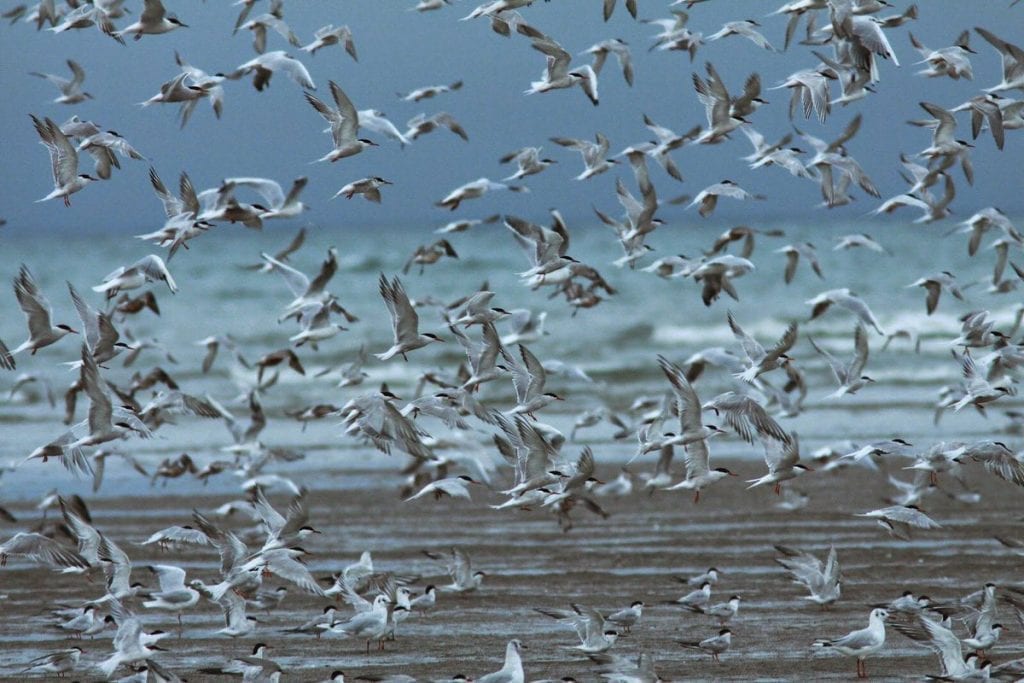
Hundreds of Common and Arctic Terns taking flight from a roost at Sandymount Strand in Dublin.
Between now and the end of September there will be flocks of tens, hundreds, and in some cases thousands of Terns resting along the Irish coast in the evening and spending their days catching fish and building their fat reserves to ensure they make it safely to the breeding grounds. It won’t just be Terns from the Irish colonies that will be here, but thousands of birds from the UK and even mainland Europe, all heading west to enjoy what Irish waters have to offer, before heading south. Without these sites where they can rest together and build their fat reserves, they would struggle to survive the arduous journey to west Africa (Common and Roseate Terns), South Africa (Sandwich Terns) and Antarctica (Arctic Terns). With this in mind, it’s important that we know the locations where the Terns are resting (a.k.a. ‘roosting’) so that we can monitor and protect them – and for this, we need your help!
If you see any Terns resting/roosting on a beach or coastal rocks in the coming weeks, please let us know by submitting details here: https://www.surveymonkey.com/r/TernRoost .
It doesn’t matter if you can’t identify the species, and it’s fine to just get a rough count of how many are present – it’s all important information for us to capture!
The locations used by Terns in this way are known as ‘stopover’ or ‘staging’ sites – i.e. they’re stopping or taking a break here before heading off on the rest of their journey. Since 2016 we’ve been gathering records of these sites from birdwatchers all around the coast to identify where the most important locations are for each species, and determine any patterns in usage – are they used by all species of terns, or just some? Are they ‘busy’ at the same time of year, or does it vary? Are they used by similar numbers each year, or are there good years and bad years?
Roosting adult and juvenile Roseate Terns.
We published the results of the first three years of this ‘Post-breeding Tern survey’ in the Irish Birds journal earlier this year, identifying 45 different sites around the Irish coast used by Terns during August and September in advance of migration. The numbers and timing of Terns being present varied considerably from year to year, and the study very much highlighted the need to gather this sort of data every year if we want to ensure we protect our Terns at their most important sites. See below for the distribution of tern roosts in the first three years (2016-2018) of this study.
So please, keep your eyes peeled if you’re around the coast in the coming weeks, particularly in the evenings when the Terns will be settling down for the night. If you see any Terns roosting (not flying/feeding) then please record whatever details you can at https://www.surveymonkey.com/r/TernRoost
See below for maps of the locations of roosts of different tern species from 2016 to 2018:
If you want to get out and see some Tern roosts we’d recommend some of the locations below. Best to visit in the evening and when the tide is pretty high:
Louth – Clogherhead beach
Meath – Gormanstown
Dublin – Skerries Coast or Sandymount Strand
Wexford – Crossfintan Point
Waterford – Clonea Bay
Cork – Cork Harbour
Kerry – Brandon Bay, Tralee Bay
Galway – Galway Bay
Mayo – Clew Bay
Sligo– Drumcliff Bay
Donegal – Donegal Bay
Sandwich Terns roosting on a small rock at high tide.
This post-breeding Tern monitoring project is part of the Irish Wetland Bird Survey (I-WeBS), which is coordinated by BirdWatch Ireland and funded by the the National Parks and Wildlife Service /

